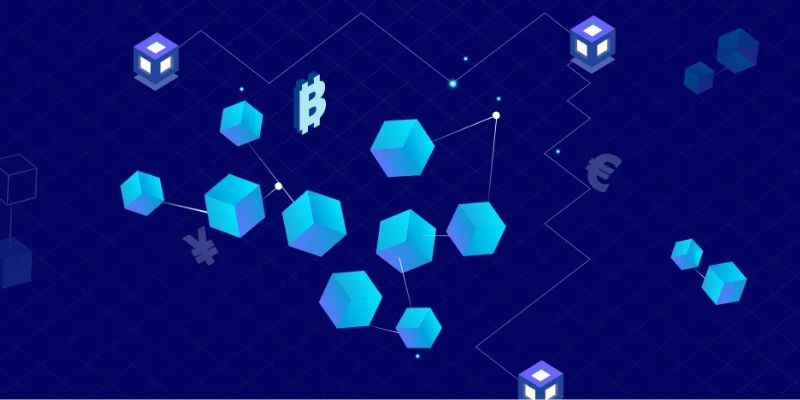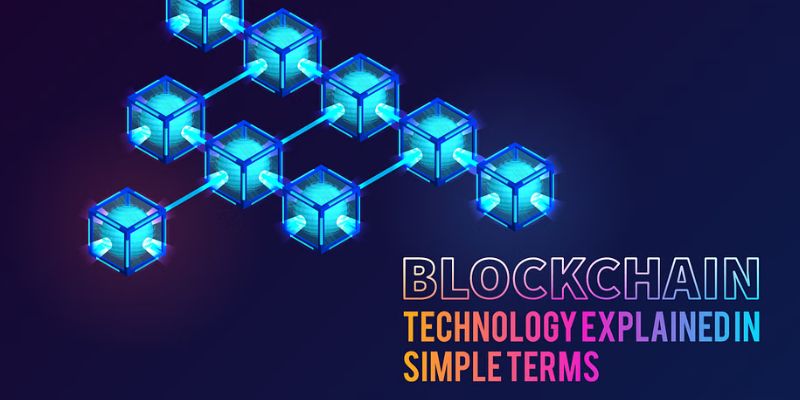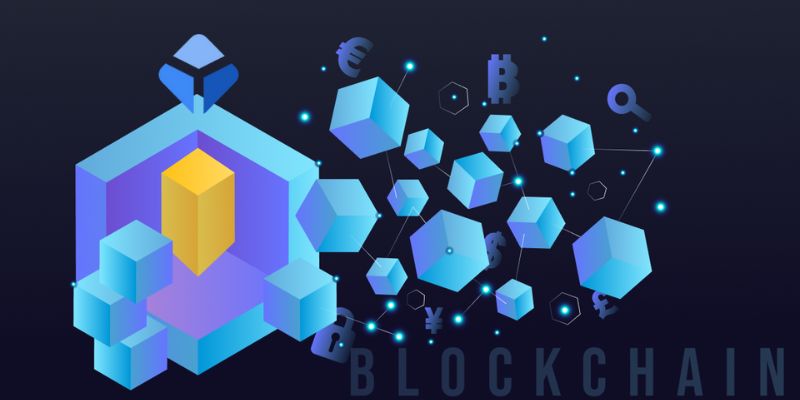Ever felt lost when folks talk about blockchain? You’re not alone. Let’s cut through the tech chatter and get to the heart of it with a straightforward explanation of blockchain technology in simple terms. Imagine a digital ledger that’s safe, shared across the globe, and records transactions like a diary you can’t erase. I’m here to guide you through the maze, showing you how this tech shapes our world, aiming to keep it as simple as chatting with a friend. Ready to unlock the future? Let’s dive into the world of blockchain, where each block holds a story, every chain is a promise of unbreakable trust. This is your first step into a larger world, one where technology empowers us to think beyond today. Buckle up; this ride is secure, fast, and revolutionary.
Demystifying Blockchain: The Basics Unveiled
Understanding the Core Concept of Blockchain
Imagine a digital book where you write down every trade you make with your friends. No one can rip out a page or change what’s written. In simple terms, blockchain is like this book. It’s a record of trades or info that is tough to change or cheat.
A blockchain gathers info in groups, called blocks. Each block has a set amount of info. When full, it links to the previous block. Like beads on a string, they form a chain of info. That’s why we call it “blockchain.”
Imagine you’re playing a game with cards on a table. With blockchain, everyone can see the game and the cards. So, no one can trick others since all eyes are on the deck. This is blockchain transparency.
The Structure and Functioning of Blockchain Ledgers
A “ledger” is like a diary or list that shows all the things that have happened. In a blockchain ledger, each page in this diary is a block. It holds trades, and info and is sealed with a unique lock. When the page is full, we start a new page. No one can change an old page once we’ve moved on.
Blockchain’s power comes from its parts working together. Picture a treehouse club. Each friend in the club is a “node.” They have a copy of all the club’s rules and trades. If someone tries to break a rule, others will know. That’s because they check their copies. They agree on what’s true. This agreement process is called a “consensus mechanism.”
Now, every word in our club’s rule book is safe because it’s hard to change what everyone has agreed upon. Imagine trying to sneak in a rule change while all your friends watch. That’s how blockchain stays safe.
In the world of computers, blockchain lets us trade money, contracts, and other things without a middleman. With smart contracts, rules are automatic. If you agree to do a task and do it, you’ll get paid without asking. No one needs to check if it’s done; the blockchain knows and pays you.
In short, blockchain lets you swap things directly with someone else. It does not need a third person to say it’s okay, making it faster and safer for everyone. Now, isn’t that a world you’d love to trade and share in?
How Blockchain is Changing the Game: Security and Operations
The Pillars of Blockchain Security Features
Blockchain is like a digital ledger that everyone can see. It records transactions in blocks. Think of these blocks like pages in a book. Each page lists transactions, and once the page is full, it’s added to the book. This book is public, so everyone can see it, but no one can change a page once it’s written.
This is where the security of blockchain shines. It uses a system where each page or block has a unique code called a hash. This hash is like a secret code that’s super hard to crack. When a new block is made, it includes the hash from the previous block, creating a chain. This makes it super tough to change any info without it being noticed.
Transparency is key. Blockchain lets everyone see the details of transactions. This doesn’t mean personal info is shared – just the transaction details. So, if I send money to a friend, the network knows the amount and when it was sent, but not who we are.
Peer-to-Peer Networks and Transaction Mechanics
Now, picture a network where you and all your friends have copies of the same book. This is the peer-to-peer network in blockchain. When someone writes a new page, or a transaction happens, each book updates. This means there’s not just one book in a library you have to visit to check, but many books, everywhere.
In this system, there are no bosses. Instead, everyone in the network has a say. When a transaction is made, it’s put on a block. A complex puzzle is then solved by computers on the network. The first to solve it gets to add the block to their book. During this, others check to make sure it’s right. This is validating blockchain transactions.
Some key terms here are ‘nodes’ and ‘miners’. Nodes are the computers that hold copies of the blockchain. Miners work on solving the puzzles I mentioned to add new blocks. Together, they keep the blockchain running smoothly and securely.
What’s extra cool is smart contracts. They’re like self-operating contracts that follow rules you set. If the rules are met, the contract does what it needs to, like paying someone, all by itself. This saves time and cuts risk because the computer does exactly what it was told, every time.
Blockchain is disrupting how we think about security and operations in the digital world. It’s not just for money, like with cryptocurrency. It’s revolutionizing how we handle all kinds of data. It can be used for owning a house, voting, and much more. With each one of these applications, the basics of blockchain stay the same – a shared ledger that’s secure, transparent, and very reliable.
So, this is blockchain simplified. It’s a new way to keep records that’s safe, open and makes it hard for data to be changed without permission. It’s not perfect yet – it can be slow and there’s lots more to learn – but it’s a powerful tool that’s here to change the game.
Beyond Cryptocurrency: The Versatility of Blockchain Applications
Smart Contracts and Their Role in Automation
Have you ever heard of a smart contract? They are like deals set in code. When certain things happen, the smart contract acts on its own. No people are needed. This neat tool comes from the blockchain basics. It helps make everything quick and sure. In a way, this is understanding blockchain making life simpler.
Smart contracts work because blockchain is trusty. This is blockchain for beginners at its best. For example, say you want to rent an apartment. You can use a smart contract. If you pay the rent, the digital key is yours right away. No waiting. No need to meet the landlord to pick up the key. How does blockchain work here? It checks the payment and acts on what was agreed. Blockchain simplified, right?
Now, what makes blockchain secure for things like smart contracts? It’s because all details are set in a computer way that nobody can change easily. When a smart contract step is completed, all people in the blockchain ledger can see it. This is the blockchain ledger basics. You see, blockchain is not just about coins!
Exploring Diverse Blockchain Use Cases in Various Industries
Talking about coins, you might think blockchain is all about money. But wait, there’s more! It’s used in many ways you might not know. This is the fun part of blockchain 101. Think about where things come from. A shirt, a phone, or medicine. Blockchain can track where all these items have come from. This is blockchain disruption. It makes sure things are what they say they are.
In healthcare, keeping patient info safe is key. Blockchain can do that. It stores medical records that can be shared safely. Only people who should see it, can. Now, let’s move to the world of money. Understanding blockchain in finance is all about speed and safety. It makes sending money across the world like sending a text. Fast, easy, and without high fees.
Then, we have the supply chain. This is blockchain for supply chain. It makes sure the food you eat followed all the steps to keep it safe. From the farm to your table, every step is recorded. If something goes wrong, you can find out where, when, and how.
Think about this. The ways blockchain can help is growing every day. The future of blockchain technology is all about making things smarter, quicker, and safer. The potential of blockchain technology is vast and we’re just getting started.
Smart contracts are just the start. And these use cases are just a small look into how blockchain can touch all parts of life. Learning the basics now can help you keep up with the changes. Blockchain could change the world and the way we trust each other. Remember, the next time you hear about blockchain, it’s not just a buzzword. It’s a real change maker.
Future-Proofing with Blockchain: Challenges and Evolutions
Navigating Scalability and Privacy: Solutions and Trade-offs
Understanding blockchain can be tough. But think of it like a Lego tower. Each Lego is data. Stack one on top of another, and you make a chain. In blockchain, once a Lego is down, you can’t change it. It’s safe and sticks around forever.
But with more people using it, we must make sure blockchain can handle it all. This is what we call “scalability.” Like any popular game, too many players can slow things down. So, we add more lanes to our data highway. The fix can mean giving up some privacy, though. It’s like needing a bigger table for a party. More friends can join, but it gets noisier, and your chats are not so private.
To keep things quick and private, smart folks are working on new ideas. They use fancy math to let you show your data’s true without showing all of it. It’s a bit like showing your ID to prove your age without sharing your name.
From Concept to Reality: Real-world Examples of Blockchain Innovation
Blockchain isn’t just for tech wizards. It’s for everyone! People are using it out in the real world in cool ways. For example, stores can now trace where your food came from, farm to fork. This way, if there’s a bad apple, we know where it came from!
Hospitals are also catching on. They keep your health records neat and safe on a blockchain. As a result, it’s easier for your doctor to get your info fast. And since it’s super secure, you don’t have to fret about someone sneaking a peek at your health deets.
These are just a few ways blockchain is shaking things up. It’s clear this isn’t just some fad. It’s a real deal revolution in how we handle and trust info. As we keep learning and improving, we’re making sure blockchain is ready for whatever the future holds.
We’ve explored the basics of blockchain, peeling back layers to understand its core and how it works. We examined its unshakable security, the way it lets people deal with each other directly, and how it moves past just money into smart contracts and more. Challenges exist, like scaling and keeping private stuff private, but bright minds are at work on these problems. Real examples show us blockchain is not just a trend; it’s shaping our future. From securing data to making deals smart and automated, blockchain’s uses are growing every day. Keep an eye on this space – blockchain is changing our world, bit by bit.
Q&A :
What is blockchain technology and how does it work?
Blockchain technology is a digital ledger system that creates a secure and unchangeable record of transactions. Each “block” in the chain contains a number of transactions, and every time a new transaction occurs on the blockchain, a record of that transaction is added to every participant’s ledger. It is decentralized, meaning it doesn’t rely on a single central point of control, and is maintained by a network of computers (nodes) working to validate and record transactions. This process is known as mining, and it helps ensure the integrity and veracity of the data recorded on the blockchain.
Can you explain blockchain in a simple way?
Think of blockchain as a digital notebook that everyone can copy and download, but no one can change what’s already written on it. Every time someone adds a note (a transaction), it’s added to everyone’s notebook. Instead of having one person in charge of the notebook, everyone who has a copy works together to make sure no one cheats and adds fake notes. This is done by solving complex mathematical problems to validate new notes, making the system secure.
Why is blockchain considered secure?
Blockchain is considered secure due to its use of cryptography, decentralized structure, and consensus algorithms. Each block is connected to the previous one using a cryptographic hash, making it extremely difficult to alter past transactions without being detected. Since the blockchain is maintained by a network of computers rather than a single entity, it prevents any single point of failure. Moreover, for a transaction to be added to the blockchain, it must be verified by multiple nodes, which follow strict rules (algorithms) to reach a mutual agreement, adding another layer of security.
What are the basic components of blockchain?
The basic components of blockchain include:
- Block: A storage unit for a set of transactions.
- Transaction: An instance of data exchange on the blockchain which could involve cryptocurrency, contracts, records, etc.
- Node: A user or a computer within the blockchain architecture which holds a copy of the blockchain and may perform tasks such as transaction validation.
- Ledger: A record that maintains all past transactions of the blockchain, replicated across every node.
- Consensus Algorithm: A set of rules and processes that control how nodes agree on the validity of transactions (e.g., Proof of Work, Proof of Stake).
What problem does blockchain technology solve?
Blockchain technology solves the problem of trust in digital transactions. By allowing digital information to be distributed but not copied or altered, blockchain creates a backbone of a new kind of internet where digital transactions and records can be made secure, transparent, and decentralized. It eliminates the need for intermediaries, like banks in financial transactions, reduces the risks of fraudulent activities, and ensures the integrity of the data shared across the network. This makes it particularly useful for financial transactions, supply chain management, and any application where immutable records are crucial.


